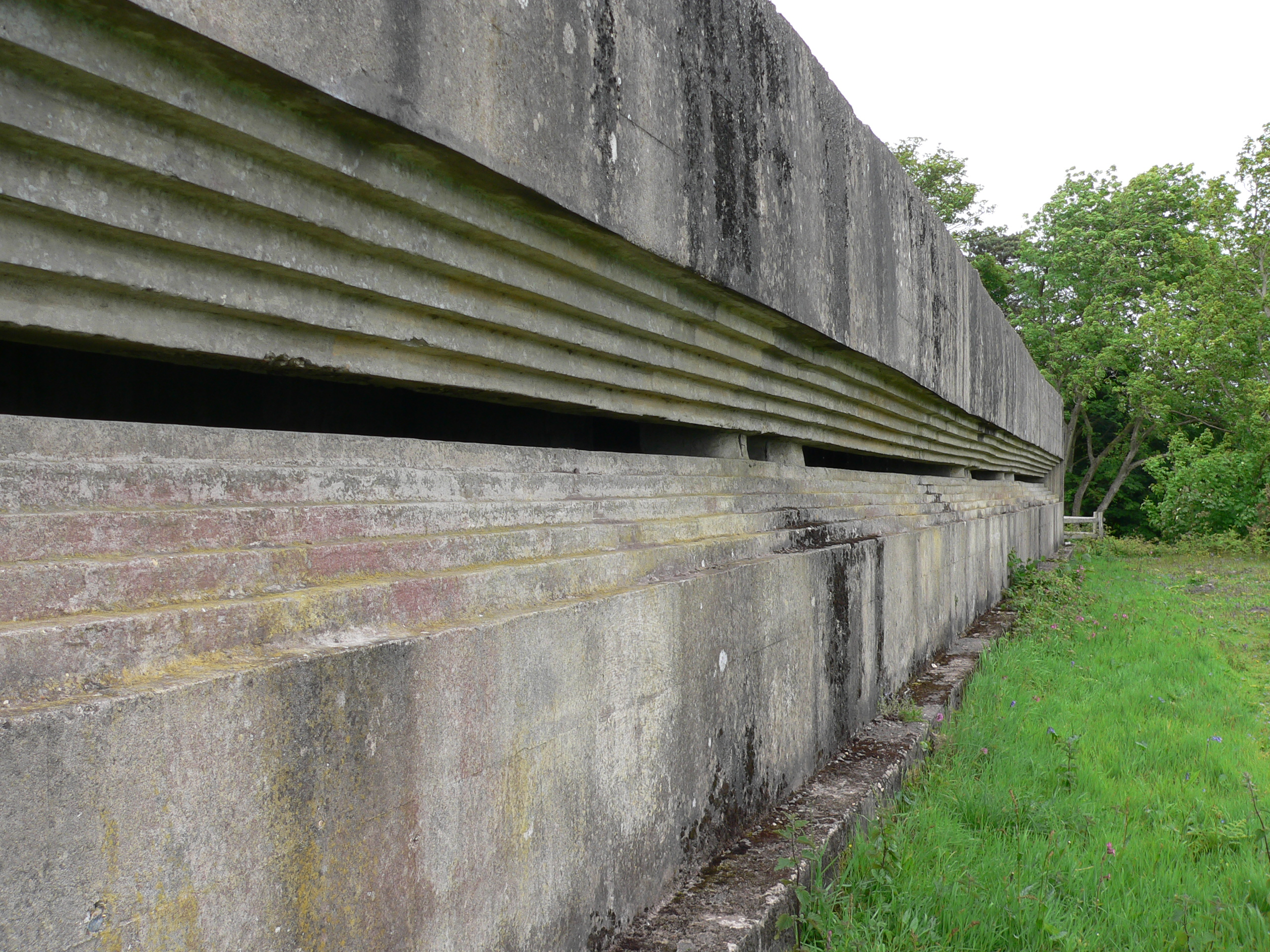Fort Henry (bunker) on:
[Wikipedia]
[Google]
[Amazon]
 Fort Henry is a
Fort Henry is a
Grade II listed
In the United Kingdom, a listed building or listed structure is one that has been placed on one of the four statutory lists maintained by Historic England in England, Historic Environment Scotland in Scotland, in Wales, and the Northern Irel ...
World War Two observation bunker overlooking Studland Bay
Studland is a village and civil parish on the Isle of Purbeck in Dorset, England. The village is located about north of the town of Swanage, over a steep chalk ridge, and south of the South East Dorset conurbation at Sandbanks, from which it is ...
, in Dorset
Dorset ( ; archaically: Dorsetshire , ) is a county in South West England on the English Channel coast. The ceremonial county comprises the unitary authority areas of Bournemouth, Christchurch and Poole and Dorset (unitary authority), Dors ...
. It was built in 1943 to defend the bay from possible German invasion along with other beach defences such as gun emplacements, Type 25 pill boxes and concrete '' Dragon’s Teeth'' anti-tank obstacles (which have also been listed for protection).
Located at the top of Redend Point, on a small sandstone promontory, the bunker is long with walls, floor and ceiling all thick. There is an wide recessed observation slit. Its name derives from the home base in Ontario
Ontario ( ; ) is one of the thirteen provinces and territories of Canada.Ontario is located in the geographic eastern half of Canada, but it has historically and politically been considered to be part of Central Canada. Located in Central Ca ...
of the Canadian Royal Engineers who built it.
Today, it is owned by the National Trust
The National Trust, formally the National Trust for Places of Historic Interest or Natural Beauty, is a charity and membership organisation for heritage conservation in England, Wales and Northern Ireland. In Scotland, there is a separate and ...
and forms part of the ''Studland Beach Second World War walk''.
An English Heritage spokesman commented following the bunker's listing on 20 November 2012:
D-Day preparations
On 18 April 1944, six weeks beforeD-Day
The Normandy landings were the landing operations and associated airborne operations on Tuesday, 6 June 1944 of the Allied invasion of Normandy in Operation Overlord during World War II. Codenamed Operation Neptune and often referred to as D ...
(6 June 1944), Winston Churchill
Sir Winston Leonard Spencer Churchill (30 November 187424 January 1965) was a British statesman, soldier, and writer who served as Prime Minister of the United Kingdom twice, from 1940 to 1945 Winston Churchill in the Second World War, dur ...
, the British prime minister, was joined by King George VI
George VI (Albert Frederick Arthur George; 14 December 1895 – 6 February 1952) was King of the United Kingdom and the Dominions of the British Commonwealth from 11 December 1936 until his death in 1952. He was also the last Emperor of Ind ...
, Supreme Allied commander Dwight D. Eisenhower
Dwight David "Ike" Eisenhower (born David Dwight Eisenhower; ; October 14, 1890 – March 28, 1969) was an American military officer and statesman who served as the 34th president of the United States from 1953 to 1961. During World War II, ...
, Field Marshal Bernard Montgomery
Field Marshal Bernard Law Montgomery, 1st Viscount Montgomery of Alamein, (; 17 November 1887 – 24 March 1976), nicknamed "Monty", was a senior British Army officer who served in the First World War, the Irish War of Independence and t ...
and Acting Admiral Louis Mountbatten
Louis Francis Albert Victor Nicholas Mountbatten, 1st Earl Mountbatten of Burma (25 June 1900 – 27 August 1979) was a British naval officer, colonial administrator and close relative of the British royal family. Mountbatten, who was of German ...
at the observation point to witness the largest live ammunition practice of the entire war.
Operation Smash
On 4 April 1944, Operation Smash was held at Studland Bay with theDuplex Drive
DD or Duplex Drive tanks, nicknamed "Donald Duck tanks", were a type of amphibious swimming tank developed by the British during the Second World War. The phrase is mostly used for the Duplex Drive variant of the M4 Sherman medium tank, that was ...
Valentine tank
The Tank, Infantry, Mk III, Valentine was an infantry tank produced in the United Kingdom during World War II. More than 8,000 of the type were produced in eleven marks, plus various specialised variants, accounting for approximately a quarter ...
s. A trial run of the tanks ran into difficulty when a change in the weather adversely affected the sea conditions. Six stricken tanks sank with the loss of six crew members.
The lesson learned from this trial was the tanks would not survive being launched too far from the beach and consequently on D-Day itself the tanks were released in shallow water.
The remains of the tanks were protected as a scheduled monument
In the United Kingdom, a scheduled monument is a nationally important archaeological site or historic building, given protection against unauthorised change.
The various pieces of legislation that legally protect heritage assets from damage and d ...
in 2019.
See also
* British hardened field defences of World War IIReferences